1971 - 1975
Key milestones from 1971 to 1975, including the formation of specialized units and significant naval acquisitions.
On this page
Our pioneering frogmen
1971
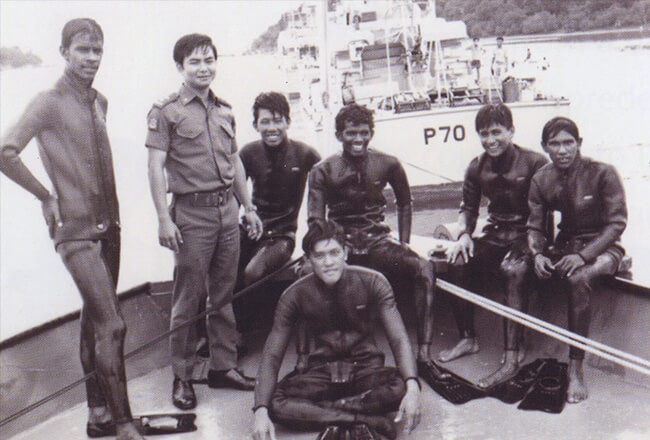
The SAF Diving Centre was formed in 1971, comprising a small group of 16 divers. Replacing the Royal Navy's Far East Fleet Clearance Diving Team, they took on the task of protecting our naval assets. In 1975, the unit became known as the Naval Diving Unit (NDU).
Raising wolves
1972

This year saw the addition of the Sea Wolf-class missile gunboats (MGBs), which marked our young Navy's foray in to maritime warfare. The MGBs were equipped with the latest radars, electronics and missiles; and remained at the sharp edge of naval warfare with system upgrades over the next two decades. RSS Sea Wolf was the first ship in the region to successfully fire an anti-ship missile.
Our new home
26 January 1974
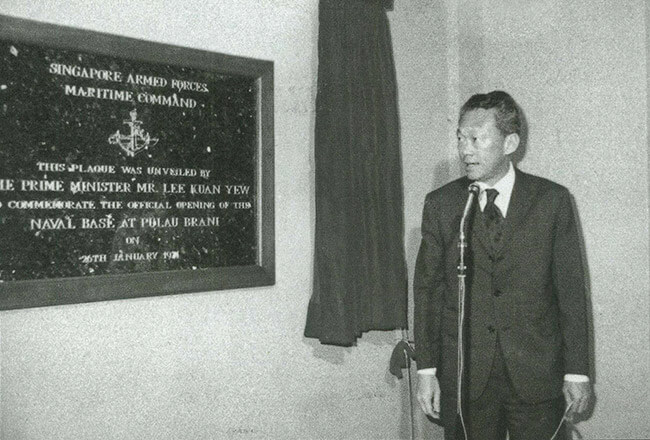
On 26 January 1974, then Prime Minister, Mr Lee Kuan Yew, officially opened Brani Naval Base – our first naval base, our home. The centrally located base at Pulau Brani made it possible for Navy ships to be quickly deployed anywhere within the Singapore Strait.
A Test of Mettle – The Laju Incident
31 January 1974
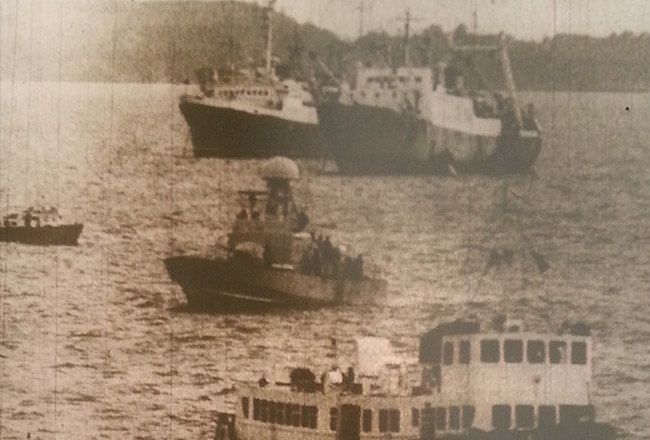
On 31 January 1974, four armed men attacked the Shell oil refinery complex on Pulau Bukom, to disrupt the oil supply from Singapore to other countries. They detonated three explosives and hijacked the ferry Laju and held five crew members hostage. Four ships, RSS Sea Hawk, RSS Independence, RSS Sovereignty and RSS Daring were mobilised for the mission. They cornered and prevented the terrorists from leaving. The terrorists finally agreed to release the remaining crew members in exchange for a safe passage back to the Middle East.
Establishment of the Midshipman School
April 1974

In April 1974, the Midshipman School was formed. Housed within the Sembawang Naval Training Centre, the school was set up to train officers locally. Our pioneer cohort of locally trained midshipmen, the Class of '74, consisted of 12 regulars and 30 national servicemen, which was much more than the number trained overseas annually.
Packing a punch
1974
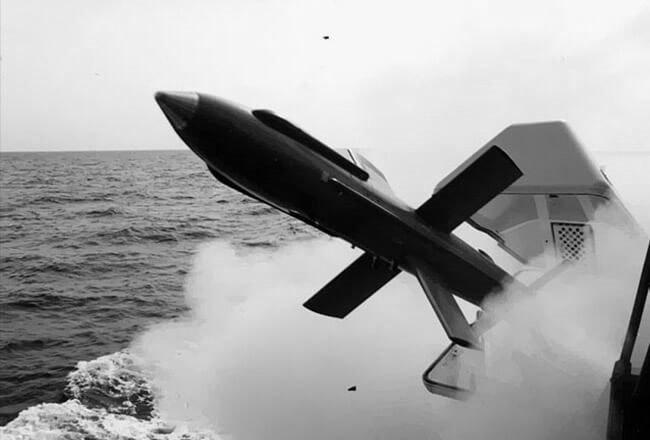
In 1974, the RSN became the first Navy in the region to fire a Surface-to-Surface Missile.
Ushering in a New Era – Missile Gunboats
22 January 1975

The six Patrol Craft, designed for constabulary duties, lacked reach and a lethal punch. On 22 January 1975, the RSN commissioned the first three Sea Wolf-Class Missile Gunboats (MGBs). Capable of sinking warships many times their size with the latest radar, electronics and missiles, the MGBs were likened to “pocket battleships”. Configured for quick, decisive strikes, the MGBs marked the RSN’s first foray into maritime warfare.
Our flying vans
April 1975
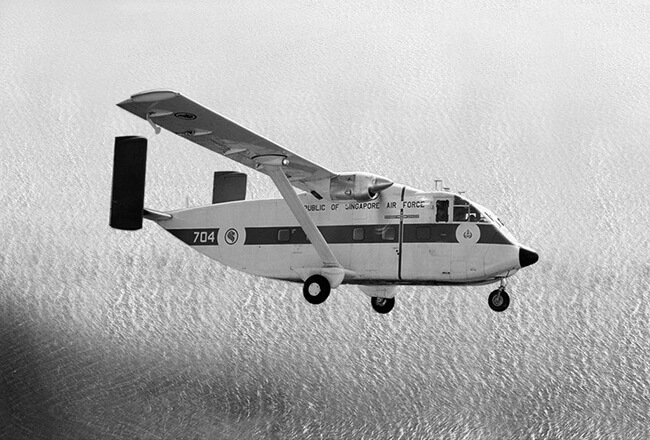
In 1973, Singapore acquired eight SH 7 Skyvans, taking to the skies to enhance the range and versatility of the Navy's reconnaissance capabilities. In April 1975, our Navy took to the skies. The Skyvans flew for their first maritime air surveillance (MAS) mission, acting as the "eyes in the sky" for the RSN, to boost the security of Singapore's sea lines of communication, which were vital for a rapidly industrialising nation. Jointly operated by the RSN and the Republic of Singapore Air Force, Skyvan's six-man crew included a Navy Action Information Coordinator and a Navy radar operator.
Baptism of Fire – Operation Thunderstorm
2 May 1975
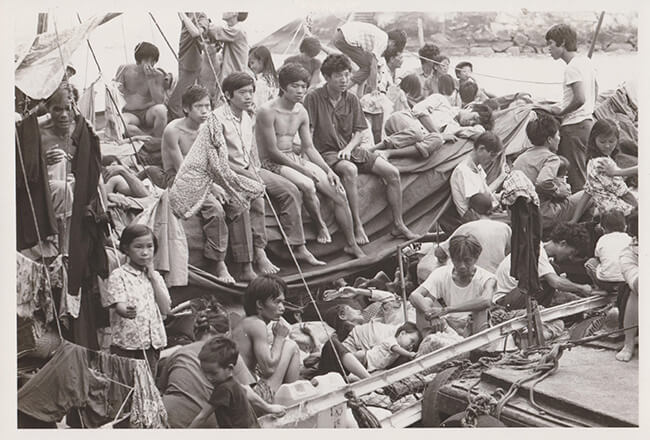
On 2 May 1975, the first SOS distress signal was picked up from a ship carrying 300 people from Indo-China. More vessels continued to stream in over the next 13 days, totalling 64 ships and 8,408 "boat people".
One dollar ships
December 1975
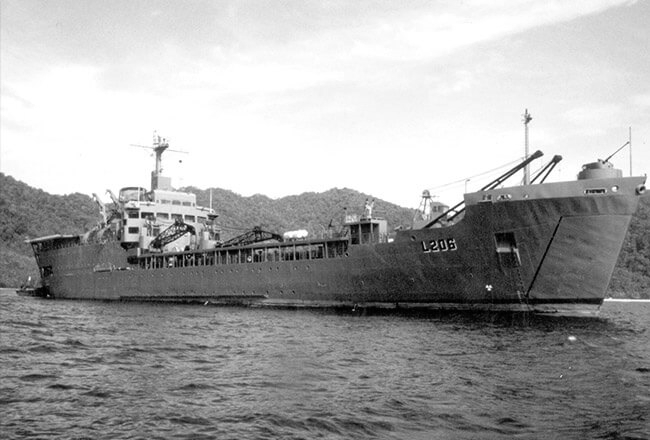
In December 1975, to boost the SAF’s sealift capabilities, the RSN acquired a squadron of World War II-era County-class Landing Ships Tank (LSTs) from the United States Navy at a token price of a dollar each.